Kalanchoe Beharensis (Velvet Elephant Ear) Grow & Care Guide
Written by Iris
Nov 17 2021
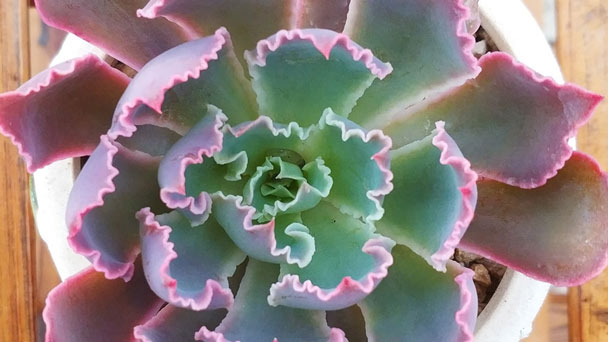
Kalanchoe Beharensis (Velvet Elephant Ear) is a slow-growing juicy tree-like shrub that can eventually grow to 12 feet tall and is evenly distributed, but Kalanchoe Beharensis usually appears much smaller. Kalanchoe Beharensis has thick stems on which grow large, wavy, and folded, olive green, slightly triangular leaves covered with brown down, giving the leaves a soft, velvety texture. Once ripe, the Kalanchoe Beharensis produces small yellow-green flowers in the winter.
Kalanchoe Beharensis need plenty of sunlight and warmth. So it is best to position them in a room which is light and bright. But it is best to avoid placing them on south-facing window sills or in direct sunlight. When in direct sunlight, the leaves can scorch, and the Kalanchoe Beharensis plant may not bloom.
As a succulent, kalanchoe needs a growing medium that does not contain too much moisture. It is also important to choose a pot or container that will wick excess water away more easily. A clay pot filled with 50% potting soil and 50% grit will be suitable. Make sure there is good drainage at the base of the pot.
In terms of the size of the container, what is required will depend on the size of the specimen. But mature single plants are usually grown in pots around 17-18 cm in diameter. Alternatively, two or three Kalanchoe Beharensis plants can be clustered together and grown in one pot of around 21-22 inches in diameter. Do not choose a pot overly large for your Kalanchoe Beharensis plant, as this could make problems with waterlogging and excess moisture more likely.
The good news is that when it comes to temperature and humidity, Kalanchoe plants are not too fussy. As long as the temperature fluctuations within the room in which it is placed are not too extreme, Kalanchoe Beharensis will thrive at a range of temperatures between around 12 and 27 degrees C.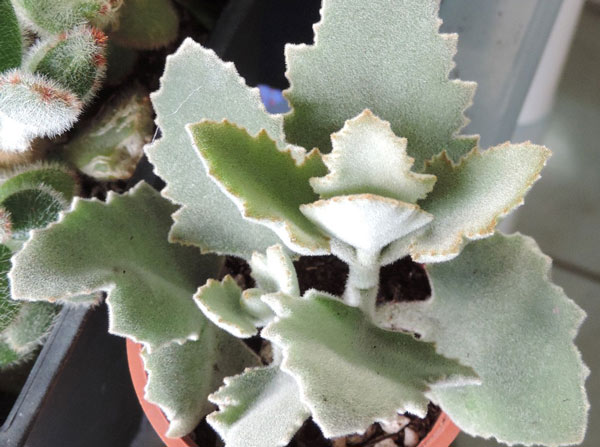
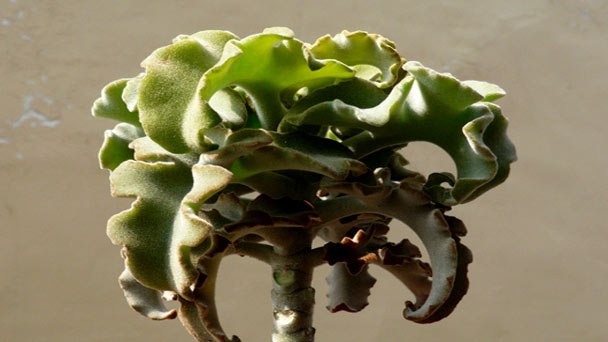
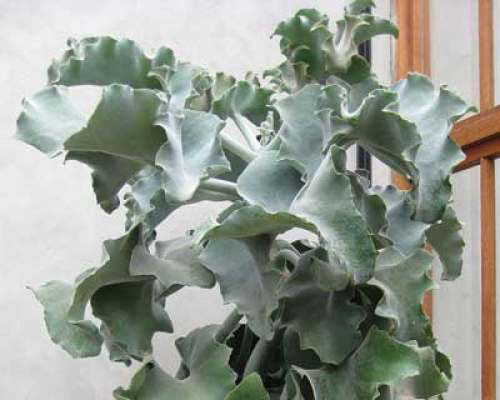
Remove old flowers to keep Kalanchoe Beharensis looking healthy and prevent seed production that drains the plant’s energy at the expense of forming new flowers.
Some Kalanchoe Beharensis are grown only for their attractive foliage (such as coleus, dusty miller and flowering kale). Their flowers are not very showy and any buds should be pinched off to keep the foliage looking its best.
Kalanchoe Beharensis may show some susceptibility to mealybugs, scales, aphids, and mites. These insects like to feed on the leaves of Kalanchoe Beharensis. They can be a problem if they go unnoticed. It is better to check your Kalanchoe Beharensis plants regularly to control the problem as soon as it appears.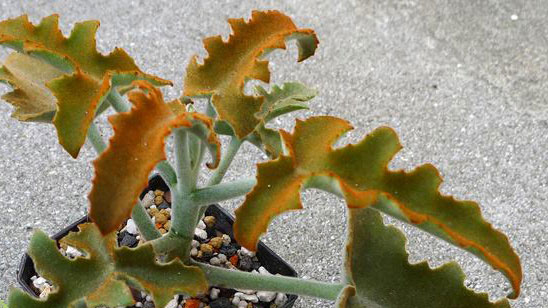
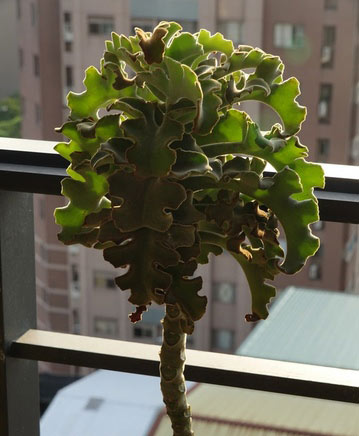
Your pet cats may experience serious conditions after ingesting a Kalanchoe Beharensis plant. The cardiac glycosides in this plant are toxic to animals and can lead to serious symptoms such as a change in heart rate, rhythm, excessive salivation, and stomach upset.
The toxicity will depend upon how much part of the plant your animal has ingested. Keep the Kalanchoe Beharensis out of the reach of your animals.
In case your pet accidentally ingests any part of the Kalanchoe Beharensis plant, consult a veterinarian as soon as possible.
Where to Grow Kalanchoe BeharensisHow to Grow Kalanchoe BeharensisKalanchoe Beharensis Propagation with SeedsKalanchoe Beharensis Propagation with Stem CuttingsKalanchoe Beharensis Propagation with LeavesHow to Care for Kalanchoe BeharensisLighting RequirementsSoil RequirementsWateringTemperature & Humidity CareFertilizer CarePruning CarePests & Diseases CareVarieties of Kalanchoe BeharensisKalanchoe Beharensis FAQWhen the Kalanchoe Beharensis flowers bloom?Is Kalanchoe Beharensis poisonous?
Where to Grow Kalanchoe Beharensis
Kalanchoe Beharensis (Velvet Elephant ear) can be grown outdoors in USDA planting zones 10-12. Since the UK lies within planting zones 6-9, this means that it is not usually possible, except in the most dramatically mild of gardens, to grow these plants outdoors.Kalanchoe Beharensis need plenty of sunlight and warmth. So it is best to position them in a room which is light and bright. But it is best to avoid placing them on south-facing window sills or in direct sunlight. When in direct sunlight, the leaves can scorch, and the Kalanchoe Beharensis plant may not bloom.
As a succulent, kalanchoe needs a growing medium that does not contain too much moisture. It is also important to choose a pot or container that will wick excess water away more easily. A clay pot filled with 50% potting soil and 50% grit will be suitable. Make sure there is good drainage at the base of the pot.
In terms of the size of the container, what is required will depend on the size of the specimen. But mature single plants are usually grown in pots around 17-18 cm in diameter. Alternatively, two or three Kalanchoe Beharensis plants can be clustered together and grown in one pot of around 21-22 inches in diameter. Do not choose a pot overly large for your Kalanchoe Beharensis plant, as this could make problems with waterlogging and excess moisture more likely.
The good news is that when it comes to temperature and humidity, Kalanchoe plants are not too fussy. As long as the temperature fluctuations within the room in which it is placed are not too extreme, Kalanchoe Beharensis will thrive at a range of temperatures between around 12 and 27 degrees C.

How to Grow Kalanchoe Beharensis
Kalanchoe Beharensis Propagation with Seeds
To propagate Kalanchoe Beharensis by seeds you have to fill a seedling tray - the ones that are often used to sow garden plants - with universal cultivation substrate mixed with 50% perlite, and water thoroughly. Then, place a maximum of two seeds in each socket, cover them with a thin layer of substrate, and finally, put the seedbed outside, in a bright area but without direct sun. Thus, keeping the soil moist, they will germinate in about two or three weeks.Kalanchoe Beharensis Propagation with Stem Cuttings
It is the fastest option. You just have to cut a kalanchoe beharensis stem, let the wound dry in semi-shade for about five days, and then plant it in a pot with universal substrate mixed with perlite in equal parts or in the garden. This way it will emit its own roots after about two weeks.Kalanchoe Beharensis Propagation with Leaves
When propagating it with leaves, you should get a leave carefully from the mother plant. It should be a healthy leave that has no part left on the stem. In this way, the propagation will worKalanchoe Beharensis Before replanting, wait for a few days to allow it to callous. Use well-draining soil for your new Kalanchoe Beharensis plant. Don’t forget to water when the soil dries out.
How to Care for Kalanchoe Beharensis
Lighting Requirements
Kalanchoe Beharensis can grow in full to partial sun, a southern, eastern or western exposure. During summer do not allow direct sunlight because its leaves who contain lots of water will get sun-burned. Direct sunlight from fall till early spring will not harm your Kalanchoe Beharensis plant.Soil Requirements
The selection of the right Kalanchoe Beharensis plant potting soil is necessary to ensure the healthy growth of the Kalanchoe Beharensis plants. Kalanchoe Beharensis likes to grow in sandy loam and well-drained soil. An ordinary succulent soil mix is just fine for growing kalanchoe Beharensis. You can purchase prepared standard succulent mix from the market. If you want to prepare potting mix at home, mix equal parts of loam, sand, and gravel. The sand and gravel will help to improve the drainage capacity of the soil. Don’t worry about the soil pH levels. Any pH of soil works fine for the growth of Kalanchoe Beharensis.Watering
Kalanchoe Beharensis plant like water only when the top level of their soil is dry. Wet soil should be avoided. The most common mistake people make is overwatering which can cause the roots to rot. You can easily prevent this by allowing your Kalanchoe Beharensis plant to dry out completely before watering. The foliage should be kept as dry as possible and, therefore, using a system, such as drip irrigation, is best.Temperature & Humidity Care
Kalanchoe Beharensis plant grow best at the optimum temperatures range between 64 and 68 °F (18 and 20 °C) day and night. If temperatures are under 61 °F (16 °C) day and night, this can delay plant growth and development and may cause blind eyes or no flowering. It is very sensitive to cold and it takes only a few hours of near 40 °F (4 °C) for the Kalanchoe Beharensis plant to die. Avoid placing it near drafts or cool windowsills.
Fertilizer Care
It is advisable that you fertilize it in spring and summer with specific fertilizers for cacti and other succulents, following the directions on the package. The latter is very important because not by adding more quantity the Kalanchoe Beharensis plant will grow faster; in fact, if more is added than what is indicated, what will happen is that it will overdose, its roots will "burn out" and the health of the specimen will be weakened.Pruning Care
Prune Kalanchoe Beharensis freely to maintain the desired size and shape. Pinching plants back stimulates dense, bushy new growth and encourages more flowers.Remove old flowers to keep Kalanchoe Beharensis looking healthy and prevent seed production that drains the plant’s energy at the expense of forming new flowers.
Some Kalanchoe Beharensis are grown only for their attractive foliage (such as coleus, dusty miller and flowering kale). Their flowers are not very showy and any buds should be pinched off to keep the foliage looking its best.
Pests & Diseases Care
Kalanchoe Beharensis is tolerant to insect pests or diseases. Normally, no serious insect pest infestations or diseases appear on this plant.Kalanchoe Beharensis may show some susceptibility to mealybugs, scales, aphids, and mites. These insects like to feed on the leaves of Kalanchoe Beharensis. They can be a problem if they go unnoticed. It is better to check your Kalanchoe Beharensis plants regularly to control the problem as soon as it appears.

Varieties of Kalanchoe Beharensis
While there are tons of different kalanchoe varietals out there, only a few are well-suited to life as a houseplant. The most popular (and widely-available) options include:- Kalanchoe Beharensis blossfeldiana: The most popular type of kalanchoe, blossfeldiana features large flower heads and is available in a variety of colors. They naturally bloom in the spring, though they can be forced into flowering throughout the year.
- Kalanchoe Beharensis manginii: This plant varietal features fleshy leaves and bears large, bell-like pendant flowers. Moist air is an essential component of its prolonged flowering.
- Kalanchoe Beharensis porphyrocalyx: Also known as Pearl Bells, this varietal consists of slender, rectangular leaves and purple pendant flowers.
- Kalanchoe Beharensis beharensis: This kalanchoe type is prized for its large, velvety leaves, which come in pale silvery green.
- Kalanchoe Beharensis pinnata: This kalanchoe variety is characterized by fleshy green leaves and bears tiny plantlets along its margins.

Kalanchoe Beharensis FAQ
When the Kalanchoe Beharensis flowers bloom?
The blooming period for Kalanchoe Beharensis flowers is in the spring and summer seasons. Mature Kalanchoe Beharensis plants produce large clusters of flowers. Growing the Kalanchoe Beharensis outside of the native area may impact its flower production. You may not see the flowers at all when grown outside.Is Kalanchoe Beharensis poisonous?
Kalanchoe Beharensis is completely non-toxic to humans. But it can be toxic to pet cats, and livestock. According to the National Animal Poison Information network, it is not poisonous to dogs if the plant is not treated with any chemicals.Your pet cats may experience serious conditions after ingesting a Kalanchoe Beharensis plant. The cardiac glycosides in this plant are toxic to animals and can lead to serious symptoms such as a change in heart rate, rhythm, excessive salivation, and stomach upset.
The toxicity will depend upon how much part of the plant your animal has ingested. Keep the Kalanchoe Beharensis out of the reach of your animals.
In case your pet accidentally ingests any part of the Kalanchoe Beharensis plant, consult a veterinarian as soon as possible.
Latest Updated
- Benefits of Bugleweed - 7 Science-backed Health Benefits
- Bugleweed Dangers & Side Effects - Is It Poisonous?
- How to Plant Evergreen Trees - What You Should Know
- When to Plant Evergreens - Grow Guide for Evergreen Trees
- 12 Wonderful Evergreen Shrubs for Your Garden
- 12 Popular Evergreen Plants with Pictures for Beginners
- When And How To Prune A Lilac Bush Like a Pro
- How to Grow & Care for Lilac Vine (Hardenbergia Violacea)
- Japanese Lilac Tree (Syringa Reticulata) Care & Propagation Guide
- Shumard Oak Pros and Cons - What to Know
Popular Articles
- Winter maintenance of Antirrhinum Majus
- How to Grow Terminalia Mantaly Tree
- How to Grow and Care for Crossostephium Chinense
- How to grow Antirrhinum Majus in spring
- Peristeria Elata (Dove Orchid) Profile: Info & Care Guide
- Underwatered Snake Plant (Sansevieria Trifasciata) - Signs And How To Fix
- How to Care for Brazilian Jasmine Plant (Mandevilla Sanderi)
- How to Grow & Care for Graptopetalum Purple Delight in Summer
- Rosa Chinensis (China Rose): Plant Growing & Care Tips
- How to Care for Baby Sun Rose (Aptenia Cordifolia)